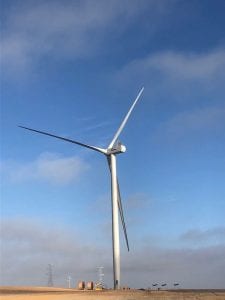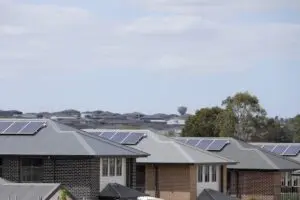Hawaiian Electric, the primary provider of electricity to the Hawaiian Islands, has submitted contracts for new solar and storage projects that will end the use of coal on the Islands and represent 300MW of solar energy and almost 2GWh of energy storage.
Hawaiian Electric has been a world-leading utility in the transition to renewable energy, having repeatedly acquired new contracts for renewable and energy storage capacity to replace the Islands’ costly fossil fuel-based generation facilities.
A mammoth multi-phase procurement effort has been ongoing since 2018 and which has already resulted in a number of projects either approved or awaiting regulatory approval. Already, as of the end of 2019, Hawaiian Electric could boast a solar capacity of 902MW across five island grids, including 684MW of rooftop solar.
Further, the first phase of the renewable energy procurement resulted in contracts for seven grid-scale solar-plus-storage projects being submitted in early 2019, which will add approximately 262 MW of solar energy and 1,048 MWh of energy storage to the islands.
The new contracted submitted to the Public Utilities Commission (PUC) for review and approval are some of those selected in the second phase of Hawaiian Electric’s procurement, announced earlier this year, in which 16 solar + storage or standalone storage projects were selected for the islands of Oahu, Maui, and Hawaii that will deliver a combined 459MW of solar generation and nearly 3GWh of power storage.
Eight contracts have been submitted to the PUC for seven solar + storage projects and one standalone storage project on the islands of Oahu and Maui, with a combined capacity of nearly 300MW of new solar capacity and approximately 2GWh of energy storage.
Importantly, the projects planned for the island of Oahu will be enough to retire Hawaii’s only remaining coal-fired power plant, the 180-megawatt (MW) plant at Campbell Industrial Park owned by AES, by September 2022.
Meanwhile, on the island of Maui, the successful completion of the planned renewable energy projects will help support the retirement of the 38MW oil-fired Kahului plant in 2024.
“As planned, these projects will significantly advance our state’s renewable energy transformation and benefit everyone by reducing our exposure to volatile oil prices,” said Jim Alberts, Hawaiian Electric senior vice president of business development and strategic planning.
In addition to the eight renewable energy and storage projects planned by independent developers in response to Hawaiian Electric’s procurement call, the utility plans to build two standalone energy storage projects – one on Maui and one on Hawaii Island – and have been submitted to the PUC for review and approval.
The projects and their prices are listed here:
| Oahu | |||||
| Developer | Project | Location | Technology | MW/MWh | Price |
| 174 Power Global | Kupehau Solar | Kunia | Solar + Storage | 60/240 | 12.8¢ per kWh |
| AES Distributed Energy | Waiawa Phase 2 Solar | Waiawa | Solar + Storage | 30/240 | 12.4¢ |
| AES Distributed Energy | Mountain View Dairy Solar | Waianae | Solar + Storage | 7/35 | 13.0¢ |
| Innergex Renewable Energy | Barbers Point Solar | Kalaeloa | Solar + Storage | 15/60 | 11.2¢ |
| Longroad Development | Mahi Solar | Kunia | Solar + Storage | 120/480 | 9.7¢ |
| Energy Storage Resource | Kapolei Energy Storage | Barbers Point Harbor | Storage | * | * |
| Maui | |||||
| Developer | Project | Location | Technology | MW/MWh | Price |
| Longroad Development | Pulehu Solar | Pulehu | Solar + Storage | 40/160 | 9.2¢ |
| Innergex Renewable Energy | Kahana Solar | Napili-Honokowai | Solar + Storage | 20/80 | 8.9¢ |
* Kapolei Energy Storage does not produce energy so has no per unit price. A fixed monthly payment is made for energy stored in a single battery system intended to provide a four-hour, 135 MW, 540 MWh load-shift of energy to the evening hours when demand increases but solar generation diminishes and a 30-minute, 50 MW, 25 MWh fast frequency response in case of a system contingency to allow operators time for other resources to stabilise the grid.










